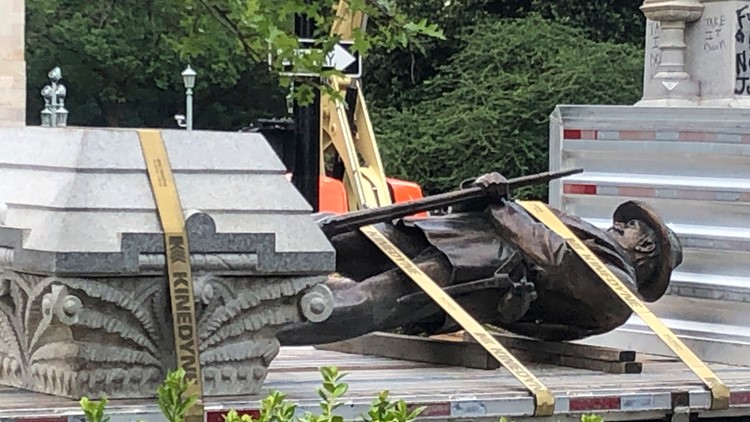Monuments to the Cause of Hate
There were 1,503 public monuments to the Confederacy that sprang up in the former Confederate states around the turn of the 20th century. They might have had the secondary purpose to honor the soldiers who fought for the South. But, the main purpose of those monuments was to insure that the people living in those former rebel states knew their places in the social order. Whites on top, blacks on the bottom. There are no monuments to the slaves who died to feed the south or to pick the cotton and tobacco upon which the southern economy was built. No, the monuments were solid, unmovable exhibits of white supremacy. And, now after a century or more of silent intimidation, they are coming down.
For 125 years, he’d stood watch. He’d stood tall in honor of men who’d fought for the Southern cause in the Civil War and, in one way, he’d looked down upon those who opposed that cause, and the slow-moving march toward change.
On Saturday, North Carolina Gov. Roy Cooper ordered the rest of the monument to be removed, along with others that honored the Confederacy. Carly Prentis Jones and Shana Tucker, two friends and musicians, did not want to miss the moment when the statue that stood the tallest stood no more. They arrived downtown around sunrise on Sunday morning.
“We didn’t want to miss anything,” said Jones, 34.
Tucker, a professional musician, brought her cello. Jones, a vocalist, carried a microphone. They both wore long dresses.
They sat in chairs on a sidewalk across the street from the First Baptist Church. They plugged in an amplifier and made music, off and on, for about two hours. Slowly, the sun rose higher in front of them. The shadow of the monument grew shorter, but the women, both Black, had long become familiar with how far that shadow stretched.

No comments:
Post a Comment